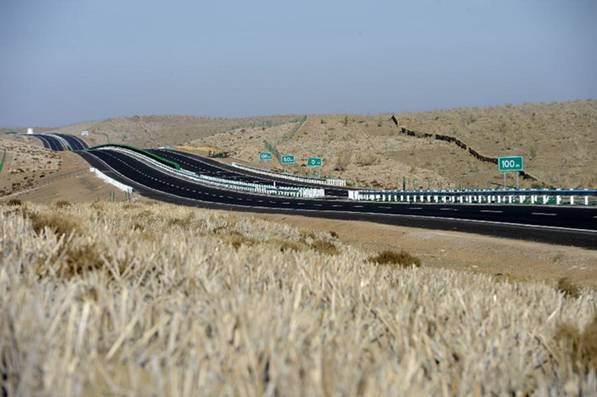
This week, China unveiled 96 km-long (60 miles-long) expressway in Xinjiang, the poor but resource-rich Western province that is home to China’s restive Uighur minority. In October, three people from Xinjiang intentionally crashed a car in Tiananmen Square, killing themselves and two tourists, and Beijing has been conducting harsh crackdowns on the region for years.
The four-lane Wucaiwan-Dahuangshan expressway is part of an expensive campaign by Beijing to soothe discontent in the region, but is seen by some critics as an “economic band-aid“ (pdf) for the region’s bigger social problems. “The completion of the highway…will play a significant role in the development of the local economy,” state-media People’s Daily reported (link in Chinese).
The expressway improves access to one of China’s largest coal fields as well as expand Xinjiang’s sorely inadequate transportation infrastructure in the north of the region—but not in the south where the majority of Uighur Muslims live. Beijing officials have been calling for improving the livelihood of residents (pdf) across the whole of the region, not just the north where the bulk of development was focused throughout the 1980s and 1990s. State enterprises are to invest in the region’s infrastructure, especially transportation.
Xinjiang accounts for 40% of the country’s supply of coal as well as a large portion of China’s onshore oil and gas deposits. Because the region is some 2,400 kilometers, or 1,500 miles, from the power-needy eastern regions of China, improving transportation is vital to keeping Chinese factories and cars fully fueled-up. The road is just part of 150,000 kilometers (link in Chinese) of expressway that officials plan to lay in the region by 2020.
Investment in the region continues to focus on heavy industry, and the increasing number of Han Chinese newcomers only adds to the perception that Beijing is gradually colonizing the minority region. As of 2011, Han Chinese made up 40% of the region’s population (link in Chinese), up from 6% in 1949.
Gang Yang contributed additional reporting.
